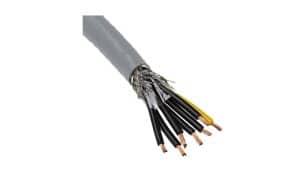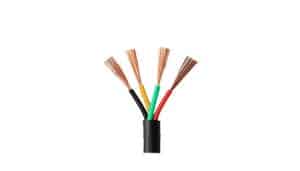Do you know the differences between control and flexible cables? It can be a tricky question to answer, especially if you’re unfamiliar with the two. Control cables are designed to transmit power and signals in industrial machines and equipment, while flexible cables are designed for general wiring applications. But what are the key differences between the two?
If you’re looking for a detailed guide that explains the difference between control cables and flexible cables, you’ve come to the right place. So, don’t wait any longer and read on to find out more!
Differences Between Control Cables and Flexible Cables
Here are 10 differences between control cables and flexible cables:
| Feature | Control Cable | Flexible Cable |
|---|---|---|
| Purpose | To transmit control signals between devices | To transmit electrical power or signals between devices in a flexible manner |
| Construction | Multiple strands of wire twisted together | Single-stranded or multi-stranded wire, or braided wire |
| Voltage rating | High | High or low |
| Current rating | High | High or low |
| Resistance | Low | Low or high |
| Insulation material | Thick | Thick or thin |
| Temperature range | Wide | Wide or limited |
| Resistance to mechanical strain | High | High or low |
| Resistance to electrical interference | High | High or low |
| Cost | High | High or low |
What Is Control Cable
A control cable is an electrical cable used to connect two or more pieces of equipment for the purpose of control. It is designed to carry electrical signals for the operation of machines, such as motors, pumps, and valves. It is usually shielded to protect against electromagnetic interference and is often rated for higher voltages than power cables. Control cables are typically made from stranded copper, PVC, or polyethylene insulation.
What Is Flexible Cable
A flexible cable is an electrical cable designed to be flexible and bendable, allowing it to be used in applications where rigid cable can’t be used. It is often used for connecting electronic components in tight spaces or for connecting electrical equipment to a power source.
Flexible cables can be made from a variety of materials, including copper, aluminum, and PVC. They are also available in a variety of sizes, colors, and shapes. Flexible cables can be used in a variety of applications, such as industrial machinery, medical equipment, and consumer electronics.
Features of Control Cables
Durability
Control cables are designed to withstand wear and tear in harsh environments, making them highly durable and reliable.
Flexibility
Control cables are designed to be flexible, allowing them to be used in many different applications.
Resistance to Corrosion
Control cables are designed to be resistant to corrosion, making them ideal for use in wet or humid environments.
Low Maintenance
Control cables require minimal maintenance and are easy to install.
EMI/RFI Shielding
Control cables are designed with an EMI/RFI shielding layer, which helps to protect the cable from electromagnetic interference.
Variety of Connectors
Control cables are available with a variety of connectors, allowing for a wide range of applications.
Temperature Resistance
Control cables are designed to withstand extreme temperatures, making them suitable for use in a variety of environments.
Flame Retardancy: Control cables are designed with a flame retardant layer, which helps to protect them from fires.
Features of Flexible Cable
Durability
Flexible cables are designed to be tough and resistant to wear and tear, providing long-term reliability and performance.
Ease of Installation
Flexible cables are easy to install and can be bent around tight corners and complex shapes, making them ideal for tight spaces.
Versatility
Flexible cables can be used in a variety of applications, including automotive, industrial, and even aerospace applications.
Cost-effective
Flexible cables are often more affordable than rigid cables, making them a cost-effective choice.
Electrical Efficiency
Flexible cables offer improved electrical performance compared to rigid cables, making them a great choice for applications that require precise electrical performance.
Flexibility
Flexible cables are designed to be flexible and can be bent, twisted, and curved to fit into hard-to-reach places, making them ideal for complex installations.
Lightweight
Flexible cables are often lighter than rigid cables, making them easier to transport and install.
Protection
Flexible cables often offer additional protection against dust, moisture, and other environmental factors, making them a great choice for harsh environments.
Related: 10 Differences Between Bus Duct And Cable Tray (With Table).
30-Seconds Summary: Control Cable vs Flexible Cable
- 1. Control cables are typically used to transmit low-voltage electrical signals, while flexible cables are used to transmit higher-voltage electrical signals.
- 2. Control cables are made of rigid materials such as copper, whereas flexible cables are made of more flexible materials such as plastic.
- 3. Control cables are designed for permanent installation, while flexible cables are designed for easy installation and removal.
- 4. Control cables are usually thicker and more durable than flexible cables.
- 5. Control cables are usually used in industrial applications, while flexible cables are used in residential and commercial applications.
- 6. Control cables are generally more expensive than flexible cables.
- 7. Control cables are typically used in applications where power and signals need to be transmitted over long distances, while flexible cables are used in applications where power and signals need to be transmitted over shorter distances.
Control Cable vs Flexible Cable Cost Difference
The cost difference between a control cable and a flexible cable depends on a variety of factors, such as the type of cable, length, and manufacturer. Generally, control cables cost more than flexible cables due to their higher quality and durability, as well as their ability to withstand harsh conditions. In general, the cost difference between a control cable and a flexible cable can range from a few cents to several hundred dollars.
Control Cable and Flexible Cable: Which Is Best?
My opinion is that flexible cable is the best option because it is more durable, flexible, and reliable than control cable. Flexible cables provide better protection against corrosion and abrasions, while also being easier to install and maintain. They are also less prone to breakage and offer better heat dissipation. Additionally, they provide better electrical performance, especially in environments with high temperatures. Therefore, I would recommend flexible cable over control cable due to its superior performance and durability.
Conclusion
In conclusion, it is clear that flexible cable is a better option compared to control cable. Hopefully, your confusion got vanished by reading the differences between control cable and flexible cable we discussed above. Ultimately, the best choice of cable depends on the specific application and requirements.
Frequently Asked Questions
When should I use control cable?
A control cable is generally used to transmit control signals between devices in an automation or control system. These signals may include digital or analog signals that are used to control the operation of equipment or systems. Control cable is typically designed to be more durable and resistant to interference than flexible cable, as the transmission of control signals is critical to the operation of the system.
When should I use flexible cable?
Flexible cable is generally used in applications where the cable needs to be able to bend or twist easily, such as in equipment with moving parts or in tight spaces. Flexible cable is often used for power or signal transmission and may be used in a variety of applications, including electrical, electronic, and communication systems.
Is one type of cable better than the other?
Both control cable and flexible cable have their own advantages and disadvantages, and the best choice will depend on the specific application and transmission requirements.
In general, control cable is more durable and resistant to interference and is typically used for the transmission of critical control signals, while flexible cable is more flexible and is often used in applications where the cable needs to be able to bend or twist easily.
Can control cable and flexible cable be used together in the same system?
Yes, it is possible to use control cable and flexible cable together in the same system. However, it is important to consider the potential impact on signal quality and integrity when mixing different types of cable.
In general, it may be best to use control cable for critical control signals and flexible cable for non-critical signals or for power transmission to ensure the most reliable transmission.
Can flexible cable be used for data transmission?
Yes, flexible cable can be used for data transmission in certain applications. However, it is important to choose a cable that is rated for the appropriate data transmission speeds and that is designed for the specific data transmission standard being used (e.g. Ethernet, USB, HDMI, etc.).
Flexible cable may be more suitable for use in applications where the cable needs to be able to bend or twist easily, such as in equipment with moving parts or in tight spaces.

Minhajul Islam is a passionate technology writer and the founder of DifferencePlanet. He is dedicated to exploring the latest advancements in the tech industry and sharing his insights with the world. With a background in computer science and a keen interest in smart homes, Minhajul has written numerous articles on a wide range of tech topics. He believes that technology has the power to transform the way we live, work, and interact with the world around us, and is always on the lookout for the next big thing.


